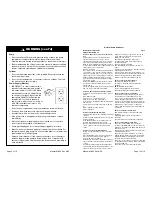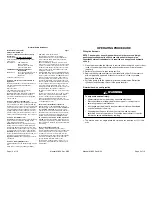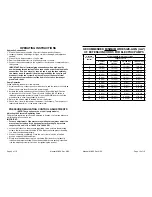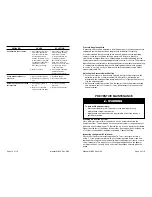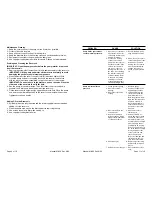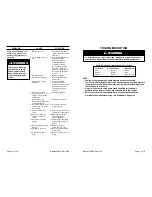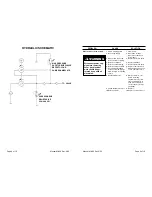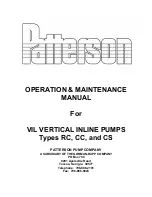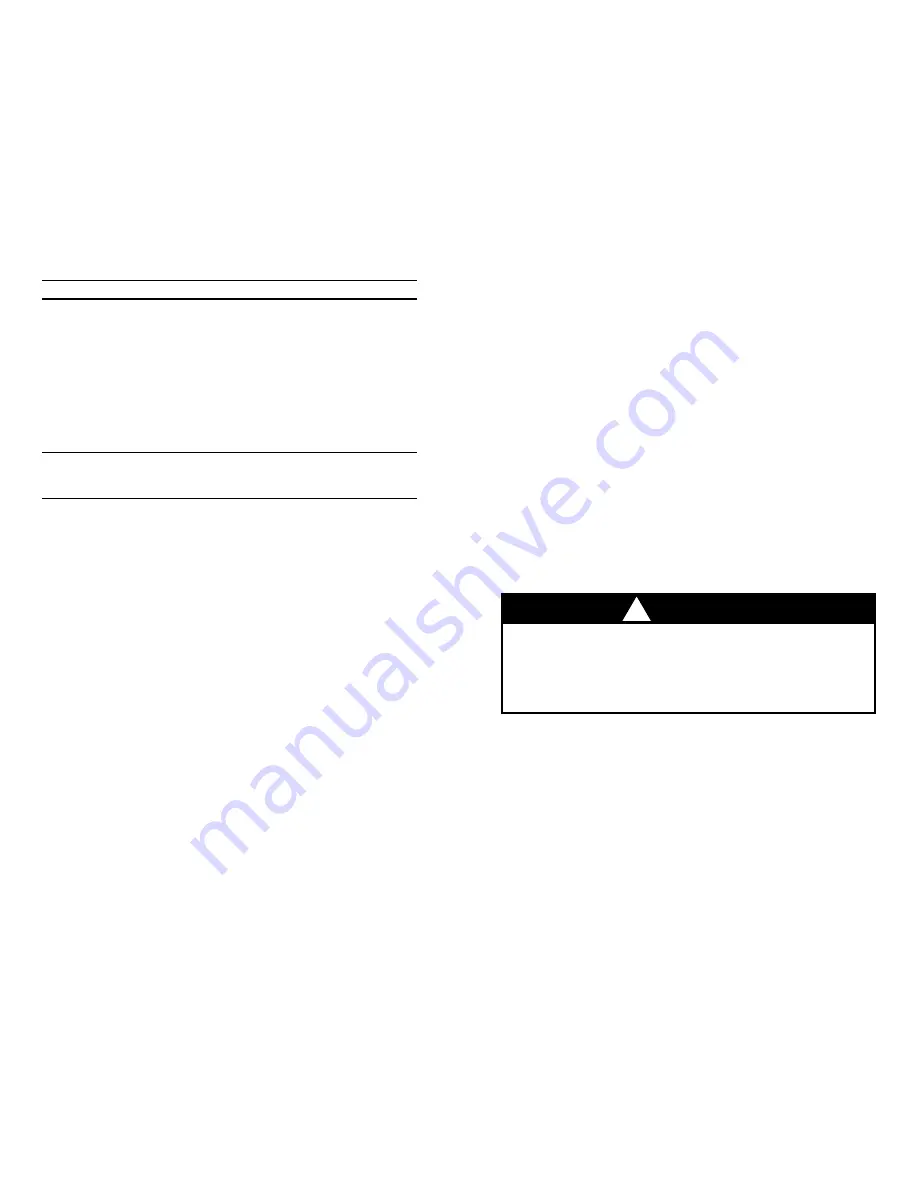
Manual M-800 Rev. 6/09
Manual M-800 Rev. 6/09
Cylinder(s) will not retract.
1. Check the system pres-
sure; if the pressure is
zero, the solenoid valve
is releasing pressure
and the problem may be
in the cylinder, (mechan-
ical linkage connected to
cylinders), or quick-
disconnect couplings.
2. Defective valve.
1. Check the cylinders for
broken return springs
and check couplers
to insure that they are
completely coupled.
Occasionally couplers
have to be replaced
because one check does
not stay open in the
coupled position.
2. Check valve operation
and inspect parts.
Replace if necessary.
PROBLEM
CAUSE
SOLUTION
Pump delivers excess oil
pressure.
1. Check pressure gauge.
2. Relief valve not properly
set.
1. Calibrate gauge.
2. Reset the relief valve.
Automatic valve will not build
full pressure.
1. Unloading pressure is
too low.
2. Defective or oversize
seat on automatic valve.
1. Increase unloading
pressure.
2. Replace ball and seat.
Page 12 of 16
Page 5 of 16
Pressure Regulating Valve
A pressure switch can be adjusted to stop the pump motor at a desired pressure
setting and restart the motor when the pressure falls below that setting.
It is recommended that a pressure switch be used with a pressure regulating
valve to insure accuracy when setting a maximum PSI level. A pressure
switch alone will break the motor’s energy supply at a selected setting, but the
hydraulic pump will continue building pressure as it slows to a stop. The pressure
regulating valve is adjusted at a setting slightly above the pressure switch setting
to compensate by releasing the pressure developed by the hydraulic pump as
it “coasts” to a stop. As a result, the pressure limit requirement can be held to
approximately 300 PSI.
Adjusting the Pressure Switch Setting
1. Loosen the locknut on the pressure switch. Slowly turn the pressure switch
adjusting screw in a counterclockwise (CCW) direction, decreasing the
pressure switch setting until the pump motor shuts off. Tighten the locknut to
lock the adjusting screw.
2. Release the hydraulic pressure. Run the pump to check the pressure setting
and automatic shutoff of the motor. It may be necessary to make a second
fine adjustment.
To help avoid personal injury:
• Disconnect the pump from the power source before performing
maintenance or repair procedures.
• Maintenance and repairs must be performed in a dust-free area by a
qualified technician.
WARNING
!
Bleeding Air from the System
Upon initial start up or after prolonged use, air can accumulate within the
hydraulic system. This entrapped air can cause the system to respond slowly or
behave in an unstable manner. To remove the air, loosen a fitting that is situated
higher than the rest of the fittings in the system. Run the pump until a steady flow
of oil free of suspended air bubbles is observed. Tighten the fitting.
Inspecting the Hydraulic Fluid Level
Check the oil level in the reservoir periodically. The oil level should come to
within 1” of the pump cover plate with all cylinders retracted. Drain, clean and
replenish the reservoir with a high-quality, approved hydraulic oil yearly or more
often if necessary. The frequency of oil change will depend upon the general
working conditions, severity of use and overall cleanliness and care given the
pump.
PREVENTIVE MAINTENANCE


